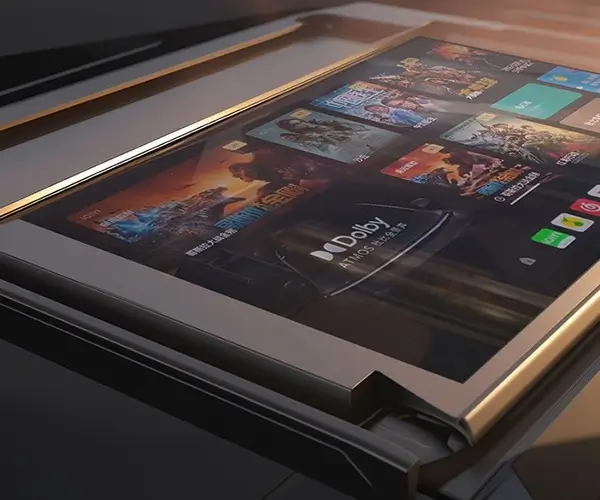Unlocking Precision: A Guide to Servo Motor Interface with Arduino Uno (Part 1)
In the ever-expanding world of electronics and robotics, few components are as versatile and widely used as servo motors. Their ability to provide precise control over angular position makes them indispensable in applications ranging from robotic arms and camera gimbals to remote-controlled vehicles and automated systems. But how do you bring these tiny, powerful actuators to life using a humble microcontroller like the Arduino Uno? The answer lies in understanding the fundamentals of servo motor interfaces, wiring configs, and the programming techniques that turn a simple board into a sophisticated control system.

What is a Servo Motor? Before diving into wiring and code, let’s briefly discuss what a servo motor actually is. Unlike ordinary motors that spin freely, a servo motor is equipped with a position feedback mechanism, enabling it to rotate to a specified angle and hold that position. This feature is achieved through a control circuit inside the servo that interprets PWM (Pulse Width Modulation) signals from a microcontroller, adjusting the motor's position accordingly.
The most common type among hobbyists is the hobby servo, typically operating at 4.8V to 6V DC, with rotation angles usually ranging from 0 to 180 degrees. They are compact, affordable, and designed for easy control, making them perfect partners for Arduino projects.
Why Use Arduino Uno? The Arduino Uno, with its straightforward architecture, ample I/O pins, and user-friendly programming environment, is the go-to microcontroller for beginners and seasoned engineers alike. Its ability to generate and interpret PWM signals makes it an ideal platform for servo control. Moreover, the extensive community support, tutorials, and libraries make integrating servo motors into your projects not just feasible but enjoyable.
Getting Started with Wiring Connecting a servo motor to an Arduino Uno is surprisingly simple, but there are a few critical details to keep in mind to prevent damage and ensure reliable operation.
The typical servo has three wires:
Power (Red): Connect to the Arduino’s 5V power supply. While most hobby servos operate at 4.8V to 6V, powering them directly from the Arduino’s 5V pin is usually sufficient for small to medium servos.
Ground (Black or Brown): Connect to Arduino GND to complete the circuit.
Signal (White, Orange, or Yellow): This wire receives the PWM control signal from the Arduino.
Here's a straightforward wiring setup:
Connect the servo's red wire to Arduino 5V. Connect the servo's black/brown wire to GND. Connect the signal wire to one of the Arduino’s PWM pins, like pin 9.
However, if you're controlling multiple servos or higher-powered motors, consider using an external power supply and common ground. Powering multiple servos directly from the Arduino can cause voltage dips and unstable behavior.
Important Tips:
Always ensure the external power supply can comfortably deliver the current your servo needs. Many servos can draw over 500mA during movement. Use common ground between the power supply and the Arduino. This reference point is essential for proper signal reading. Avoid powering the servo from the Arduino's 5V pin for multiple or high-torque servos to prevent undervoltage issues.
Programming Your Servo with Arduino IDE Once the hardware setup is complete, the next step is programming. The Arduino IDE comes with a built-in library called Servo, which simplifies servo control.
Here’s a simple example to get you started:
#include Servo myServo; // Create a Servo object void setup() { myServo.attach(9); // Attach the servo to PWM pin 9 } void loop() { for (int angle = 0; angle <= 180; angle += 1) { // Sweep from 0 to 180 degrees myServo.write(angle); delay(15); // Wait for the servo to reach position } for (int angle = 180; angle >= 0; angle -= 1) { // Sweep back myServo.write(angle); delay(15); // Wait for the servo to reach position } }
This code makes the servo sweep back and forth between 0 and 180 degrees smoothly. You can modify the angles, speed, and incorporate sensors for more interactive projects.
Practical Applications At this stage, you might be wondering—what can I do with a servo motor and Arduino? Here are a few inspiring ideas:
Robotic arms: Control the joints with precision to mimic human movements. Camera gimbals: Stabilize and direct your camera for smooth videos. Automated door openers: Create doors or vents that respond to sensors or timers. Animatronics: Breathe life into figures or props with moving parts. Educational projects: Teach concepts of control systems, feedback loops, and automation.
Troubleshooting Common Issues
Servo jitters or doesn't move: Ensure you're providing enough power and common ground. Use delay() appropriately. Verify the wiring connections.
Overheating or burning out: Avoid commanding large movements continuously. Check the servo’s specifications and provide external power if necessary.
No response from code: Check the pin numbers, ensure libraries are included correctly, and confirm that your servo is functional.
Summary of In this initial exploration, we've covered the basics of what a servo motor is, how to wire it to the Arduino Uno, and how to write simple code to control its movement. The key takeaway is that understanding PWM signals and power management forms the backbone of successful servo control projects. Now, as we look forward to the second part, we'll delve into more advanced control techniques, sensor integration, and real-world project ideas to elevate your skills.
Leveraging innovations in modular drive technology, Kpower integrates high-performance motors, precision reducers, and multi-protocol control systems to provide efficient and customized smart drive system solutions.




































